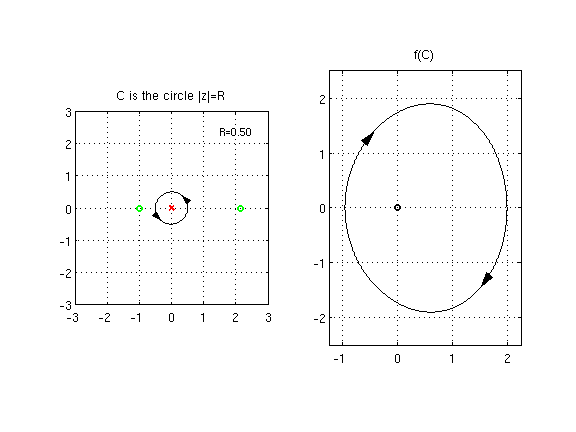Math 313 - Functions of a Complex Variable
Warren Weckesser
Demonstration of the Argument Principle
The following animation shows the circle
with radius R and its image under the
map f(z) = sin(z+1)/z.
This function has a simple pole at z=0
(marked with a red x in the plot on the left),
and simple zeros at z = n π - 1
(marked with green circles in the plot on the left).
The argument principle says that
ΔC arg f(z) = 2π(Z-P)
where Z and P are the number of zeros and poles,
respectively, of f(z) inside C, counted with
multiplicity.
The integer Z-P is the winding number of f(C);
it counts the net number of times the curve winds around the origin.
We apply this principle to f(z)=sin(z+1)/z with
C the circle of radius R centered at the origin.
For any R > 0, we have P=1.
For 0 < R < 1, we have Z=0, so the winding
number is -1; the curve f(C) goes around the origin once
in the clockwise direction.
For 1 < R < π-1, we have Z=1, so the winding
number is 0;
the curve f(C) does not enclose the origin.
For π-1 < R < 2π-1, we have Z=2, so the
winding number is 1; f(c) goes around the origin once
in the counterclockwise direction.
More generally, for nπ-1 < R < (n+1)π-1 with
n>1,
we have Z = n+1, so the winding number of f(C)
is n.
In the animated plot below, observe how the curve f(C)
on the right changes as the radius of C increases.
In particular, observe how f(C) goes around the origin,
and verify that the predictions made by the argument principle
are correct.


